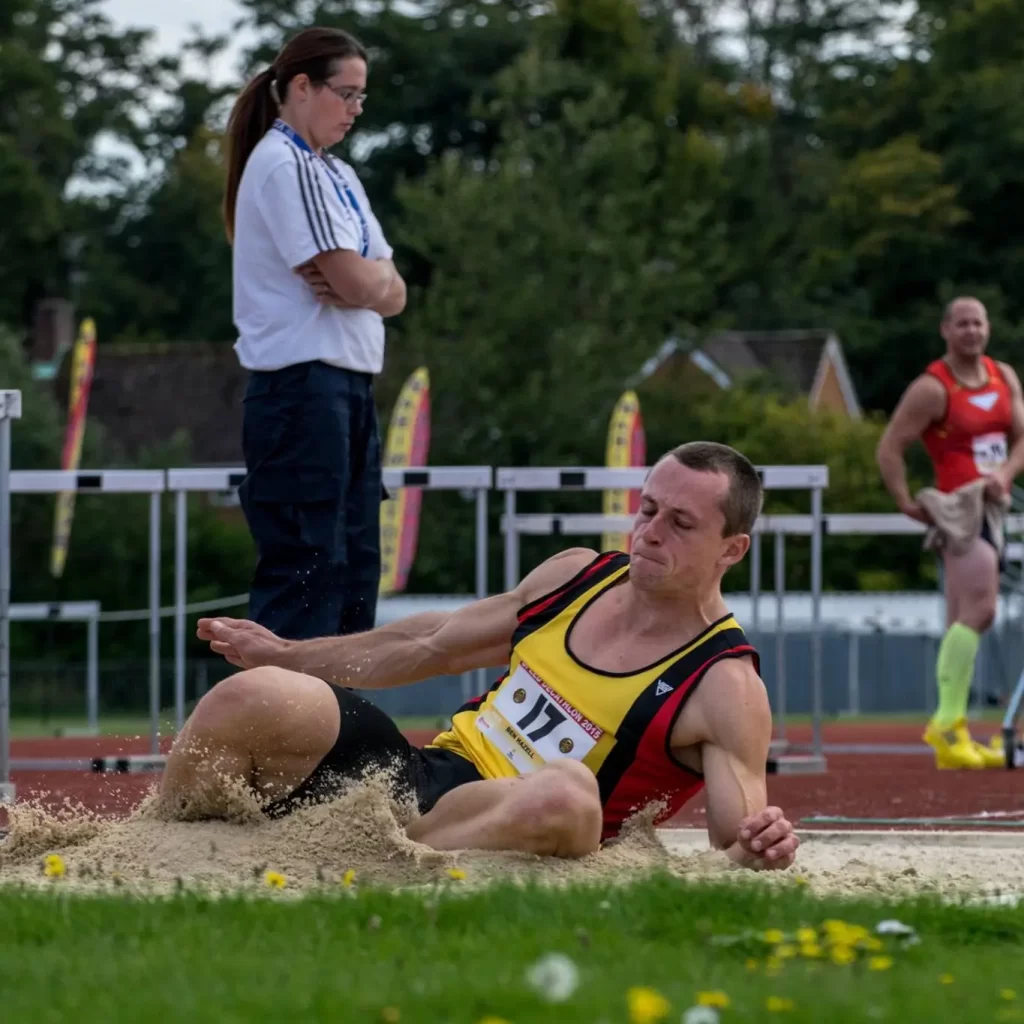Other Posts
- October 5, 2021In this article, we'll show…
Benefits of Running in the Morning and Why You Should Do It
February 14, 2025Running in the morning has…


The long jump, a cornerstone event in track and field athletics, is a thrilling showcase of speed, strength, and agility. Originating in the ancient Olympic Games, it has evolved into a modern athletic discipline where competitors sprint along a runway and leap as far as possible into a sandpit. The essence of this sport lies not just in the distance covered but in the harmonious blend of technique, power, and precision.

This intriguing event raises a pertinent question: what constitutes a “good” long jump distance? More intriguingly, how does this benchmark vary across different age groups? Young athletes, adults, and seasoned professionals may have varying standards based on developmental, physiological, and training factors. Our exploration delves into understanding these nuances, providing athletes, coaches, and enthusiasts with a comprehensive perspective on what a commendable long jump distance looks like across various age brackets. This insight is not just a measure of achievement but a guide to setting realistic, motivational goals in the pursuit of athletic excellence in the long jump.
Drawing data from Power of 10, a comprehensive track and field results database renowned for its detailed rankings across various age groups, we can analyze the average long jump distances for different age categories. This data provides an insightful benchmark for athletes:
| Age | Male Distance | Female Distance |
|---|---|---|
| 12 | 4m 23cm | 4m 05cm |
| 14 | 5m 18cm | 4m 55cm |
| 17 | 5m 79cm | 4m 96cm |
| 20 | 6m 22cm | 5m 18cm |
| 25 | 6m 68cm | 5m 41cm |
| 30 | 6m 30cm | 5m 20cm |
| 40 | 4m 64cm | 3m 80cm |
| 50 | 4m 35cm | 3m 28cm |
These figures are more than just numbers; they serve as a guide for athletes to measure and compare their performances relative to peers in their age group. For aspiring young jumpers, these benchmarks are goals to aim for, while for adult and veteran athletes, they offer a realistic perspective on performance levels. This data, sourced from a reliable and respected platform like Power of 10, is invaluable for athletes and coaches in setting appropriate goals and training strategies.
To be considered elite in the world of long jump, athletes must achieve distances that surpass the norm significantly. The elite mark is set for male jumpers at a formidable 7 meters and 45 centimetres. Female jumpers reach elite status by achieving a distance of 6 meters and 34 centimetres.
These distances represent a significant leap beyond average competitive levels, reflecting exceptional athleticism, technique, and dedication. Achieving these distances requires natural talent and years of focused training, perfecting every aspect of the jump—from the run-up to the takeoff and landing. Elite jumpers are often distinguished by their meticulous attention to detail in training, psychological preparation, and ability to consistently perform at the highest levels under competitive pressure.
These records are not just numbers; they represent the pinnacle of long jump achievement and are a source of inspiration for athletes worldwide. They stand as a challenge to current and future long jumpers, beckoning them to leap further into the realms of the extraordinary.
The distance achieved in long jump is not solely a function of physical ability; it’s a complex interplay of several key factors. These include speed, explosiveness, acceleration, and jumping power. Each of these elements plays a critical role in determining the effectiveness of a long jump performance.
Understanding and developing these factors are crucial for long jumpers of all ages. Young athletes often have a lot of potential to improve in all these areas as they grow and mature, while older athletes might focus more on maintaining or fine-tuning their abilities. Tailoring training to address these factors appropriately for each age group can lead to significant improvements in long jump performance.
In this exploration of long jump distances, we’ve delved into what constitutes a good performance across different age groups, drawing on data from Power of 10. We’ve seen how factors like speed, explosiveness, acceleration, and jumping power play pivotal roles in long jump success and how these develop uniquely across ages. For those aiming for elite status, we’ve outlined the lofty benchmarks of 7m 45cm for males and 6m 34cm for females.
As you pursue your long jump aspirations, remember to set goals that are realistic and aligned with your age and training level. Every athlete’s journey is unique, and progress is a personal measure. We encourage you to engage further—read more, learn more, and share your own long jump stories. Your experiences could inspire and guide others in this exhilarating athletic endeavour.